How to optimize Customer Lifetime Value (CLV)—15 tactics every marketer needs to know
Customer Lifetime Value (CLV) may perhaps be the most underrated metric, with businesses giving priority to Customer Acquisition over CLV. Customer Lifetime Value, it is all about customer retention. Studies have shown that existing customers spend 67% more than new customers. In fact, according to a Harvard Business Review article, even a 5% increase in customer retention rates can improve profits by at least 25%.
In our previous blog post on Customer Lifetime value, we spoke about CLV in light of acquisition costs and as a factor of retention. In this blog, we will cover some of the top proven strategies that marketers can adopt right away to start improving their CLV. But wait…
Updated on May 14, 2020
Here’s What You Need to Know Before Diving In
Before you can start implementing the best strategies to retain customers, you need to know the top reasons why customers leave in the first place.
- 71% leave because of poor customer experience
- 14% are not satisfied with the quality of products/services
- 56% of customers don’t believe that brands have their best interest in mind
- 35% of customers leave because brands don’t “get them”
Notice a pattern here? Customers tend to leave a brand primarily because of the poor customer experiences they are offered.
The Pareto principle states that 80% of the profits come from just 20% of the customers.
This means that by studying the top 20% of your customers, you can work out how to attract similar people and increase your future profits.
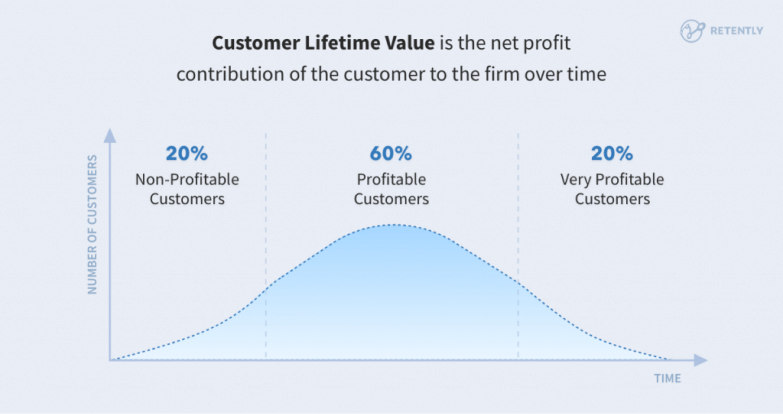
The graph shows how Customer Lifetime Value plays out over time, making it vital for marketers to focus on retention efforts to keep as many customers as possible for a longer period of time. In the long-run, this will contribute to the Customer Lifetime Value of a business.
Optimizing your Customer Lifetime Value, therefore, becomes about delivering relevant experiences and retaining them for a long time. As you plan your next marketing budget, it makes sense to give importance to retention-focused initiatives and slow down with acquisition-heavy initiatives.
Read more on this in our eCommerce Lifetime Value (LTV) Playbook.
How to Optimize Your CLV
It’s far less expensive for a business to retain customers than it is to acquire new ones. Yet most companies continue to invest significantly more money into customer acquisition than retention efforts. As a result, they do acquire new customers, but they lose most of them along the way.
Fortunately, there are endless ways to go about solving this. Increasing your CLV isn’t a strategy in cast iron, and rightly so. It’s all about keeping it personal and interacting at a human level. You need to identify the type of users who are your customers, know their preferences, why they chose you over the competition, and find out any other information about them that can help with establishing a unique connection.
Understanding your Customer Lifetime Value will make you think, not only about the short-term goal of increasing sales, but also about the holistic customer journey: when, where, why, for how much, and how often do your customers make a purchase? Answering these questions in the right way will bring valuable insights, and help you spot issues you may not have noticed before.
There are four metrics that contribute to your CLV – Average Order Value (AOV), Purchase Frequency, Profit Margin, and Churn Rate. To optimize your CLV, you need to pay extra attention to these metrics and optimize them.
Broadly speaking, you can identify CLV optimization strategies under two categories:
- Customer Experience
- Customer Retention
One could also argue that the first is a prerequisite for the second — but the facts remain — but optimizing your CLV is more than a mathematical equation. In this blog, we’ll examine all the aspects that fall within the scope of the above two metrics.
Customer Experience
Customer experience starts the moment a customer visits your website or downloads your app. Many businesses make the mistake of thinking that customer experience is a set of activities that need to be undertaken. While the actions taken by the user are a part of the experience, they aren’t everything.
Customer experience is a holistic approach that spans the lifetime engagement of the customer with the brand. The underlying core of customer experience must be the vision to build a robust and long-lasting relationship with the customer. Let’s look at some strategies you can adopt to improve the customer experience.
1- Improve the Onboarding Experience
Did you know that poor onboarding experience is the leading cause for customer churn? Popular studies have shown that anywhere between 20 to 25% of customers are likely to leave in the initial phase due to poor onboarding strategies followed by brands.
It’s in the onboarding process that your customers really engage with your products and it’s where you can make the greatest positive impact It’s extremely important to put together a strategic onboarding process to encourage new users to come back for more and increase their lifetime value for your brand.
The process can vary depending on the industry, customer needs, or desired outcomes. However, there are a few key tips that most businesses use to engage their audience. First of all, the onboarding process must be easy and quick. You can simplify the process with walk-through guides, interactive how-to videos, and other content that might help customers.
You need to focus on communicating the value of your offering right from the get-go. The best way to optimize this is to continually test onboarding approaches and monitor the customer health score based on customer behavior.
2- Keep the Communication Relevant
Your main goal is to map the customer journey, identify the touchpoints, and send out highly targeted personalized campaigns to make yourself visible as a reliable source of knowledge.
Marketing content is great, we get it, you want to grab your customers’ attention. But remember that customers are looking for value and meaningful experiences over automated drip-campaigns and email marketing tactics with nothing to offer.
Make sure to keep product recommendations as relevant and contextual as possible. Your customers are looking for the easiest path to purchase. If you confuse them with irrelevant recommendations, you may lose them to the competition.
3- Implementing Immaculate Customer Services
Did you know that one-third of consumers switch to competitors due to poor customer service?
Quality customer service is a necessary investment to help your business grow and increase retention. If your service is below average, customers will defect to competitors even if your product is above average.
It’s important to get customer service right. Better customer service equals a better customer experience. Offering your existing customers a better service will make them more likely to become loyal long-term clients.
4- Improving Omnichannel Engagement
Almost all of your customers own more than one device and as Google research has shown, 98% of people switch between devices throughout the day. As this is the case, surely, the customer engagement with your brand is not limited to your website alone.
Identifying the channels your customers are most engaged with can go a long way in helping you build the most conducive engagement strategy. Not every customer behaves the same way, and since the underlier of CLV is offering personalization, it makes sense to understand your customers individually rather than as a collective group. Keep in mind that businesses which adopt an omnichannel approach achieve a 91% higher Y-o-Y retention rate than those who don’t.
5- Having a Live Chat Support
Popular research suggests that the great majority of customers say receiving an immediate response to their requests influences their loyalty to the brand.
Live chat is extremely useful for businesses in responding to their customers swiftly. About 79% of customers say they prefer using live chat because it offers immediate responses. Also, website visitors who use live chat on your website are 4.5 times more likely to continue engaging with your brand than the ones who don’t, so there’s plenty of room to increase conversions with them.
This is because customers who opt to use the live chat option want to stay engaged or are looking for something more. Making this the perfect opportunity to deliver a positive and relevant experience that will have far-reaching benefits.
6- Build Stronger Relationships With Your Customers
Here’s a fact: building good customer relationships is critical to the ongoing success of your business. In fact, 16% of customer churn rides on the back of poor relationships.
Throughout the customer journey and during all your interactions with a client, it’s important to nurture a healthy bond. The key is to make them feel heard and appreciated. Knowing that they’re in the hands of a proactive team will increase their confidence in your brand’s capabilities.
7- Listen to Your Customers, Collect Feedback
“If you’re happy and you know it, clap your hands.”
Happy customers are loyal customers. Growing your business without knowing what your customers think of you is like searching for the needle in the haystack, in the dark. That’s why you need actionable and regular feedback. Not only does it make the process easier but it also provides a 3-dimensional perspective: knowing what your customers think, identifying opportunities to address challenges, and retaining customers through issue resolution.
Net Promoter Score (NPS) and surveys are great ways to collect this feedback and consolidate insights. You don’t need anything elaborate, even something as simple as a web feedback overlay can give you great insights into the customer experience.
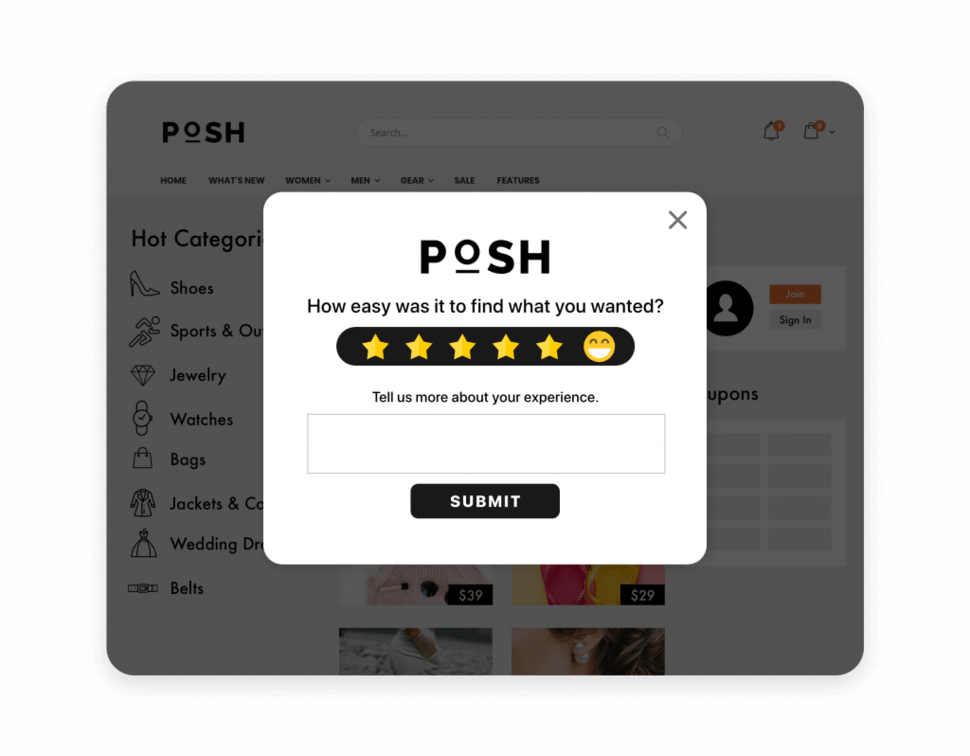
8- Personalization is The Golden Key
The term personalization has been overdriven to the point of irrelevance — but the value of a great personalization strategy can never be underestimated. Did you know that 8 in 10 consumers are willing to pay more for personalized customer experiences?
You can use personalization to craft highly personalized in-app messages for each customer segment and increase your odds of improving conversion rates as well as retaining users.
Personalization helps you deliver better and more meaningful customer support, which is vital if you want to increase customer value over time. It also makes it easier for clients to feel like they have an actual relationship with your brand, instead of just being a number on your balance sheet.
Customer Retention
A fundamental cornerstone of CLV is being able to retain your customers for as long as possible. Retention investments drop over the lifetime of the customer as they start trusting your brand for future purchases. So when done in an optimized way, customer retention is a highly worthwhile investment.
Over the course of your business, existing customers will contribute greater revenue than new customers. The ROI on retention strategies are also higher than the ROI on acquisitions. This is proof enough that brands need a healthy chunk of their marketing strategies to be focused on retention efforts.
9- Encourage Repeat Purchases
Existing customers spend 67% more than new customers. So encouraging repeat purchases is a good strategy to have in your marketing mix.
After investing a fair bit of money into acquiring new customers, you want them to continue purchasing from you since the ROI from a one-time purchase doesn’t justify the ROI on acquisition costs.
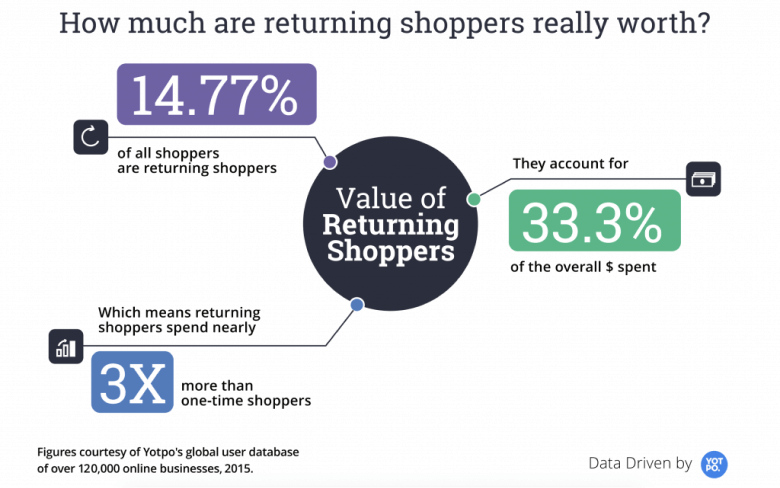
Also, remember that the longer a customer stays with you, the cost of retention drops off significantly and the ROI from the acquisition increases.
10- Improve the Average Order Value (AOV)
Along with encouraging repeat purchases, brands also need to focus on improving their AOV metric. By providing customers with relevant recommendations around what they are looking for, you can incentivize them to add relevant items to their cart.
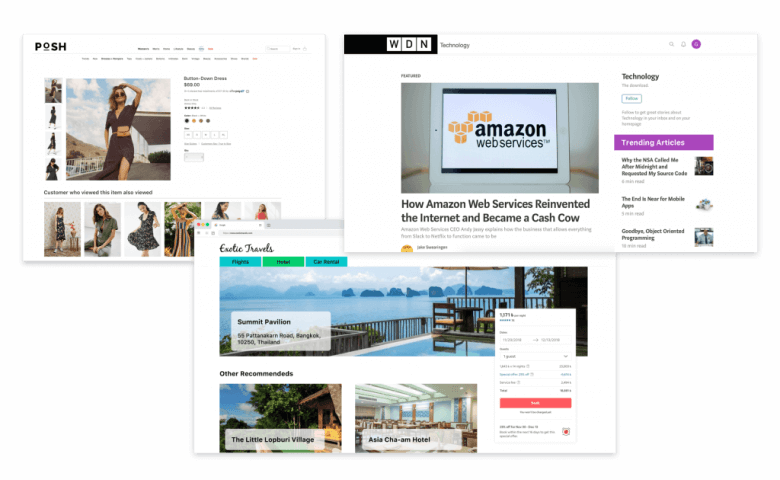
Having a “customers who viewed this item also viewed” section can greatly improve your chances of increasing the Average Order Value.
Upselling and cross-selling are also great examples of increasing your AOV. You can start by promoting similar and upgraded products on the checkout or product pages.
11- Reward Long-Time and Loyal Customers
Everyone loves a sense of belonging and when brands value their customers and promote a sense of belonging, it enhances trust and loyalty. Loyalty programs have long been used to reward those shoppers with high levels of spending. After segmenting your customer base by profitability, you can directly reach out to your most profitable customers and offer rewards based on their CLV. Not only does this reward their past behavior, but it also introduces an exclusivity factor to your rewards program, to further incentivize future purchases.
12- Consolidate Your Data Streams With a Customer Data Platform
Customers today engage with your brand and make purchases from multiple devices. Many companies have difficulty combining all the data streams into a unified and measurable whole. To extract meaningful insight from these separate streams can be both expensive and inefficient. Companies without a dashboard that can synthesize all customer data will find it increasingly difficult to work on optimizing their CLV.
A CDP serves as a central hub for all your customer data, segmenting all data into individual profiles, and provides visibility on the history of each customer. A CDP is an excellent tool for calculating CLV, since it has all the key components of the formula in one place. Some CDPs even offer CLV as an out-of-the-box metric.
The best CDPs will make it easy for you to activate your CLV data within the platform. With a good CDP, you should be able to segment your customers by their lifetime value, then send automated personalized campaigns to those different segments.
13- Adopt Emerging Channels
New channels for customer engagement are opening up every year and brands need to ensure their presence on these channels to ensure they’re not missing out on new and smart opportunities.
WhatsApp Business API and Facebook Messenger for businesses are two of the top emerging channels for customer engagement. More than 70% of customers feel confident about brands that they can message directly. These emerging channels provide the right opportunity for these kinds of connections.
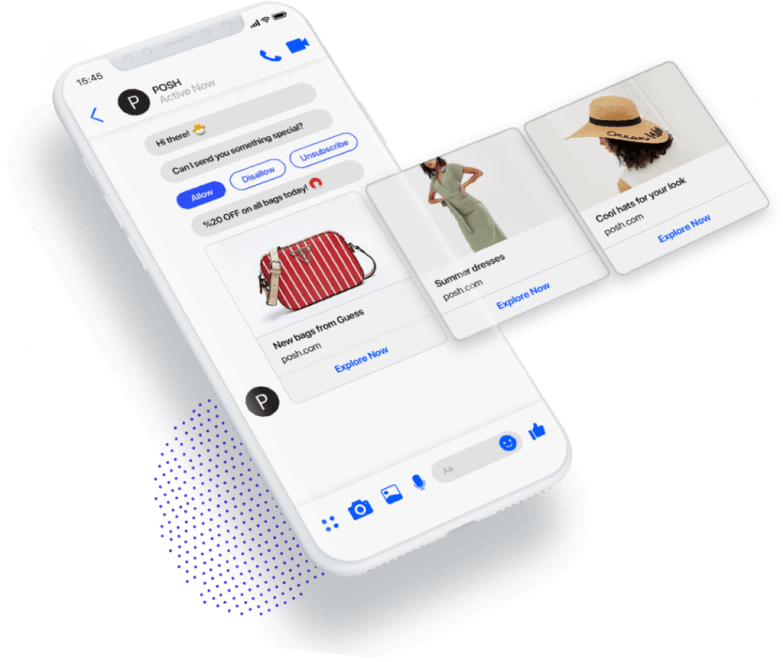
These platforms can also be used to capture the voice of the customers through interactive feedback and survey options. Brands today need to be where the customers are and start engaging them proactively and personally.
14- Leverage Personal Data for Better Service
For many businesses, lead generation is a vital part of their business model. However, if lead-gen efforts come across as intrusive, you will end up losing potential leads. According to Accenture’s pulse survey, 83% of millennials are happy to share personal data if it leads to a more personalized in-store or online shopping experience.
Personal data and customer experience, therefore, go hand in hand. If you want to start reaching out to your customers, generate leads and engage with them one-on-one you brand must deliver the experience that will reassure them to share their information.
15- Focus on Delivering More Human Experiences
CLV may be a number on an excel sheet, but for your customers, it is a representation of the human side of your brand. If you treat them like a number, chances are 60% of your customers are likely to switch to a competitor.
But brands that are able to deliver this human appeal in their engagements will end up influencing the loyalty of 82% of their customer base.
Let’s Wrap This Up
Now that you’ve got a fair grasp on the topic — here are a few pointers to takeaway:
- Customer experiences contribute immensely to improving the Customer Lifetime Value
- Customers are willing to pay more for better experiences
- Repeat purchasers can contribute 67% more revenue than new customers
- Personalized customer retention strategies are crucial to improving CLV
- Even a 5% increase in customer retention rates can improve profits by at least 25%
- Having a Customer Data Platform (CDP) can assist with CLV optimization efforts
Make sure to subscribe to our updates so you can get notified on our next blog where we will explore some of the effective tools to improve Customer Lifetime Value.



















